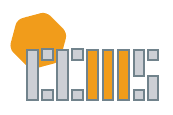Abstract / Synopsis
Analyzing youth video submissions regarding COVID-19 to KQED’s ‘Let’s Talk About the Election’ website, we explore the mathematics these youth engaged in through their submissions without creating any explicit connection to school mathematical concepts or standards. Our focus is the students’ construction of sets (e.g. sets of nurses, doctors, American workers), as a means of creating connection with voters and other media authors through Marchi and Clark’s (2021) construct of connective journalism. We observe these youth constructing sets of varying sizes and reflecting on how these sets are contextualized within a larger political dialogue. We also attempt to rewrite part of one student composition using school mathematical symbolic logic, reviewing what in the student’s message is no longer present in the school mathematical analogue and why. We conclude by encouraging practitioners to explore with their students other instances in which they can challenge numerical or school mathematical symbolic writing as a superior means of communicating ideas.
DOI
10.5642/jhummath.SKGI7186
Recommended Citation
Alexandra R. Aguilar, Emma C. Gargroetzi, Lynne M. Zummo & Emma P. Bene, "Exploring Set-Theoretic Practices of Youth Engagement in Connective Journalism: What We Lose in School-Mathematical Descriptions," Journal of Humanistic Mathematics, Volume 13 Issue 2 (July 2023), pages 176-198. DOI: 10.5642/jhummath.SKGI7186. Available at: https://scholarship.claremont.edu/jhm/vol13/iss2/12
Terms of Use & License Information
Included in
Education Commons, Journalism Studies Commons, Mathematics Commons, Social Influence and Political Communication Commons
